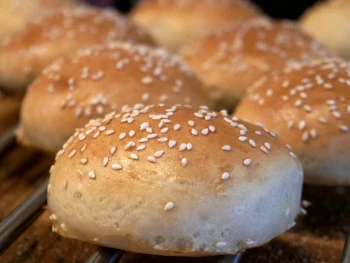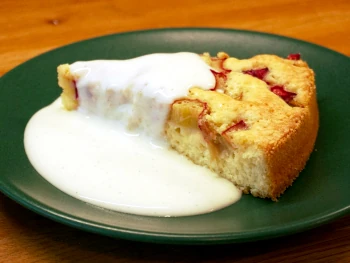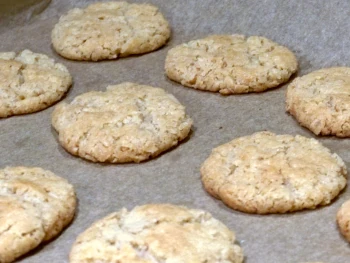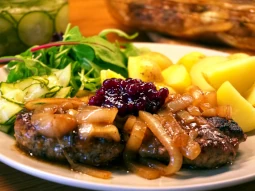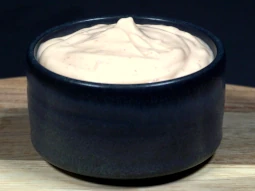Best dough for Neapolitan style pizza.
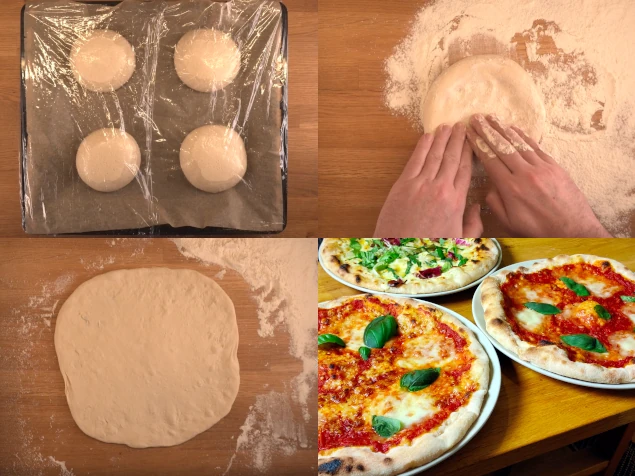

| Servings | 4 Portions |
| Tags | Flour | Italian | Main Course | Pizza | Vegetarian |
| Allergens | Wheat |
| Prep Time | 30 min |
| Rest Time | 720 min |
| Cook Time | 30 min |
Best dough for Neapolitan style pizza in my opinion. I have tried a number of different recipes, but always land on this when I make pizza at home. With only 4 ingredients, its easy, but it takes some time (proofing in the fridge overnight) and training to get really great. Other recipes I have tried often contain oil and sugar, which is good in terms of taste, but since the dough is cooked in an oven that has been pushed up as high as possible in temperature, there is a great risk that you burn the edges of the pizzadough, which can give a slightly bitter taste. According to rules by "Associazione Verace Pizza Napoletana" the official ingredients for the dough only four: flour (tipo 0 or tipo 00), water, salt and water. By letting the dough rise overnight, this dough gets a bit of a sourdough feeling and I think that the cooked pizza dough both tastes great has the texture I want.
I am using TIPO "00" flour that might be a bit tricky to get hold of, but som stores have it and I think it makes a difference. If you cant find it, use strong flour (vetemjöl special) instead but increase the amount of water to 340g to compensate. Of course you can use other types of flour or mix freely, but you probably need to adjust the amount of water based on which flour or flour mix you choose.
Of course you can also knead the dough by hand, but Im lazy and let the machine take care of it. If you have access to a food processor, let it knead the dough for about 10 minutes on low speed - it is not terribly important to knead the dough perfectly here as it will still be in the fridge overnight and then the yeast will do its job. The same applies if you knead by hand - make sure that all the ingredients are mixed well and knead until the dough becomes a little elastic, but there is no need to overwork the dough in at this point.
The hard part about getting pizza really good at home is the baking itself. In a pizzeria, they have ovens that can be heated up to almost 500°C, which most normal home ovens cannot handle. The fast cooking in high heat is what gives Neapolitan pizza its character. In addition to some special pizza ovens that can be purchased for home use (e.g. Ooni and the like) or to build your own wood-burning pizza oven in your garden, you have to do a little trick with your home oven to simulate these conditions. After experimenting a bit with my oven, I got good results if I chose as high a temperature as possible, activated the grill element at the top of the oven and used a pizza steel that I placed high up in the oven. The oven was then left to pre-heat for about an hour so that the pizza steel was guaranteed to at temperature. Then I could push the pizza in with the help of a pizza spade on the pizza steel and give the pizza 2-3 minutes depending on the amount of filling. The result is very good for being made at home and I do not think the guests will complain that it is not exactly like at the pizzeria.
Ingredients
Directions
- In a foodprocessor with dough hook - mix lukewarm water and yeast. Leave it for 10 minutes.
- Start the machine and add salt and flour. Leave it running for 5-10 minutes.
- Grab the dough and put it in a lightly oiled container with a lid. Leave it to prove for 2 hours. The dough will increase 2-3 times in size.
- Put the container with the dough in the fridge over night.
- The morning after - devide the dough into 4 peices. (about 210g a peice).
- Shape into 4 balls (using a bit of extra flour) and put them on a baking tray with baking paper that has been lightly oiled. Add a small amount of oil on top of the balls as well then cover with cling film.
- Put the baking tray in the fridge.
- Remove the baking tray with the dough from the fridge 30-60 minutes before its time to cook, giving the dough a final proofing.
Nutrition Facts*
| Total | Serving | 100 g | |
|---|---|---|---|
| Energy | 1746.6 kcal | 436.65 kcal | 205 kcal |
| Carbohydrates | 347.79 g | 86.95 g | 40.82 g |
| Fat | 5.54 g | 1.38 g | 0.65 g |
| Protein | 65.01 g | 16.25 g | 7.63 g |
| Sugar | 11.93 g | 2.98 g | 1.40 g |
| Salt | 14.82 g | 3.71 g | 1.74 g |
* The nutritional information provided is approximated and calculated using the ingredients available in the database. Info will vary based on cooking methods and brands of ingredients used.I am not a certified nutritionist. Please consult a professional nutritionist or doctor for accurate information and any dietary restrictions and concerns you may have.
